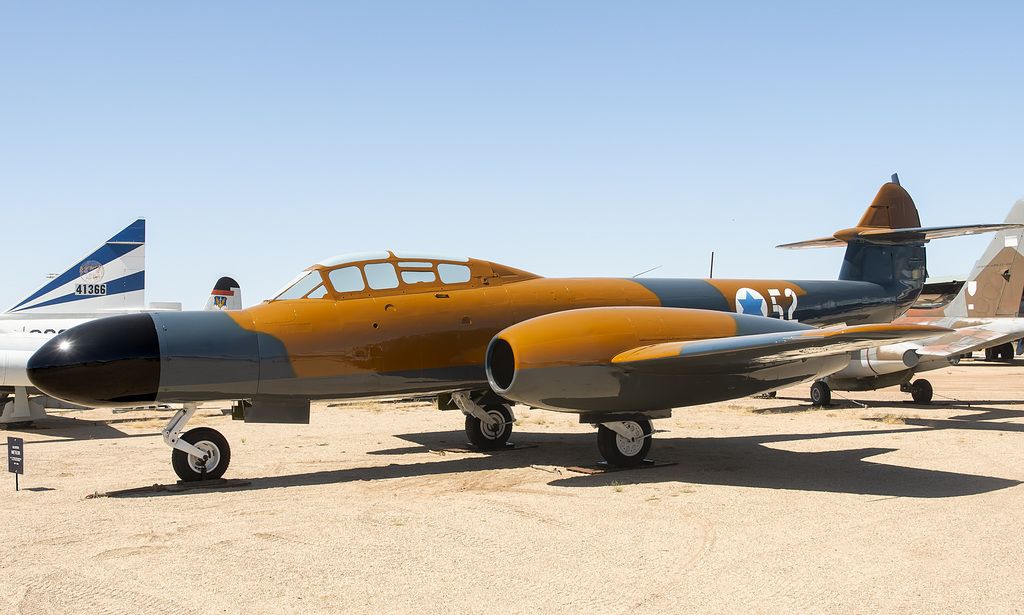GLOSTER METEOR T.7

The Gloster Meteor was developed during World War II and was the only jet fighter to see operational service with the Allied Forces during the war. Development of the Meteor began in 1940 with the first flights in 1943. By the middle of 1944 a small number of Meteors were operational with the RAF’s Number 616 Squadron. They were used to intercept the German V-1 flying bombs and at least 14 Buzz Bombs were shot down by Meteors. Development of the Meteor continued after World War II and later versions of the aircraft served with the RAF until 1962.
The two seat Meteor T.7 trainer was introduced in 1948. Over 700 were built for the RAF, Royal Navy and seven foreign customers. Several two seat Meteors have been modified to serve as aerial test platforms for ejection seat testing. A modified canopy allows the rear seat to be ejected in flight to test new seat designs. At least two of these aircraft are still in use by the Martin Baker company in 2019.
Wingspan | 37 ft 2 in. |
Length | 43 ft 6 in. |
Height | 13 ft |
Weight | 18,800 lbs (loaded) |
Maximum Speed | 510 knots |
Service Ceiling | 35,000 ft |
Range | 600 miles |
Engines | Two Rolls-Royce Derwent 8 turbojet engines with 3,600 pounds of thrust each |
Crew | 2 |
Manufacturer
Gloster
Markings
Israeli Air Force, 119 Squadron, 1957
Designation
Meteor T.7
Serial Number
WF877